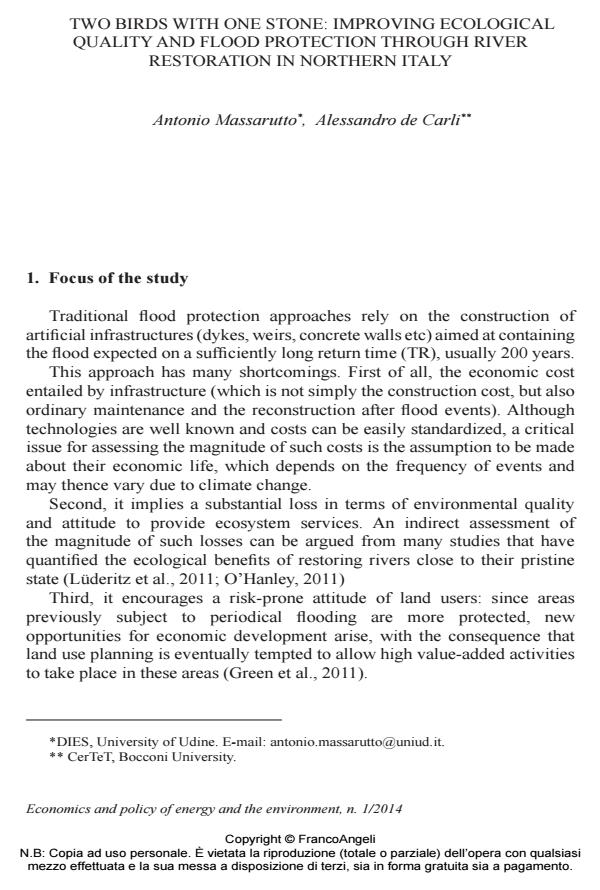Two birds with one stone: improving ecological quality and flood protection through river restoration in Northern Italy
Titolo Rivista ECONOMICS AND POLICY OF ENERGY AND THE ENVIRONMENT
Autori/Curatori Antonio Massarutto, Alessandro De Carli
Anno di pubblicazione 2014 Fascicolo 2014/1
Lingua Inglese Numero pagine 29 P. 93-121 Dimensione file 403 KB
DOI 10.3280/EFE2014-001005
Il DOI è il codice a barre della proprietà intellettuale: per saperne di più
clicca qui
Qui sotto puoi vedere in anteprima la prima pagina di questo articolo.
Se questo articolo ti interessa, lo puoi acquistare (e scaricare in formato pdf) seguendo le facili indicazioni per acquistare il download credit. Acquista Download Credits per scaricare questo Articolo in formato PDF

FrancoAngeli è membro della Publishers International Linking Association, Inc (PILA)associazione indipendente e non profit per facilitare (attraverso i servizi tecnologici implementati da CrossRef.org) l’accesso degli studiosi ai contenuti digitali nelle pubblicazioni professionali e scientifiche
This paper outlines the results a multi-criteria evaluation study applied to the integrated assessment of flood protection options in Northern Italy. The study aims at comparing advantages and disadvantage of a more traditional approach based on hard infrastructure calibrated on the event with a return time of 200 years (TR200) with a more innovative approach based on a combination of non-structural measures, controlled flooding of lower-value areas and mitigation. These are now standard in Northern Europe and elsewhere; however their feasibility has never been investigated in the Italian context. Despite the study is still at a pioneering level, it authorizes some optimistic evaluation about the desirability of non-structural remedies in Italy. The study argues about the necessity of complementary measures, especially based on compensative payments for ecosystem services, in order to improve social acceptance for such practices.
Parole chiave:Flood protection, non-structural measures, economic environmental policy instruments, river restoration, multi-criteria analysis
Jel codes:Q25, Q54, R52, Q15
- AGRIDE-c, a conceptual model for the estimation of flood damage to crops: development and implementation Daniela Molinari, Anna Rita Scorzini, Alice Gallazzi, Francesco Ballio, in Natural Hazards and Earth System Sciences /2019 pp.2565
DOI: 10.5194/nhess-19-2565-2019
Antonio Massarutto, Alessandro De Carli, Two birds with one stone: improving ecological quality and flood protection through river restoration in Northern Italy in "ECONOMICS AND POLICY OF ENERGY AND THE ENVIRONMENT" 1/2014, pp 93-121, DOI: 10.3280/EFE2014-001005